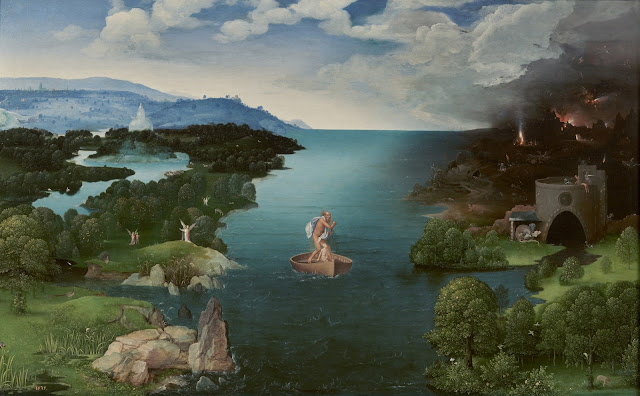 |
| Anonymous Flemish Artist Penitent St Jerome in a Landscape ca. 1530-40 oil on panel Art Institute of Chicago |
 |
| Anonymous Flemish Artist St Jerome in the Wilderness ca. 1500-1550 oil on panel York City Art Gallery |
 |
| Anonymous Flemish Artist Landscape with Mercury and Argus ca. 1570 oil on panel Getty Museum, Los Angeles |
 |
| Anonymous Flemish Artist River Landscape with Mountains ca. 1525-50 oil on panel National Gallery, London |
 |
| Maarten van Heemskerck Panorama with the Abduction of Helen, amidst the Wonders of the Ancient World 1535 oil on panel Walters Art Museum, Baltimore |
 |
| Maarten van Heemskerck Allegory of Geometry in a Landscape before 1574 oil on panel private collection |
 |
| Maarten van Heemskerck Jonah Under his Gourd Vine 1561 oil on panel Royal Collection, Great Britain |
 |
| Pieter Brueghel the Elder Procession to Calvary 1564 oil on panel Kunsthistorisches Museum, Vienna |
 |
| Pieter Brueghel the Elder Landscape with the Flight into Egypt 1563 oil on panel Courtauld Gallery, London |
 |
| Pieter Brueghel the Elder The Harvesters 1565 oil on panel Metropolitan Museum of Art, New York |
 |
| Joachim Patinir Crossing the River Styx ca. 1520-24 oil on panel Museo del Prado, Madrid |
 |
| Joachim Patinir Landscape with St Christopher 1522 oil on panel Monasterio El Escorial |
 |
| Joachim Patinir Rest on the Flight into Egypt ca. 1518-24 oil on panel Museo Thyssen-Bornemisza, Madrid |
 |
| Joachim Patinir Landscape with St Jerome 1516-17 oil on panel Museo del Prado, Madrid |
 |
| follower of Joachim Patinir Landscape with the Destruction of Sodom and Gomorrah ca. 1510-30 oil on panel Ashmolean Museum, Oxford |
Flemish landscapes of the sixteenth century are generous with details, often panoramic in viewpoint, full of light and air, but almost never unpopulated. The genre did not break free of narrative and/or moralistic purposes until the following century – when techniques of topographic expression invented and popularized by 16th-century pioneers like Patinir, Heemskerck, and the elder Pieter Brueghel could begin to be regarded by both artists and patrons as ends in themselves.